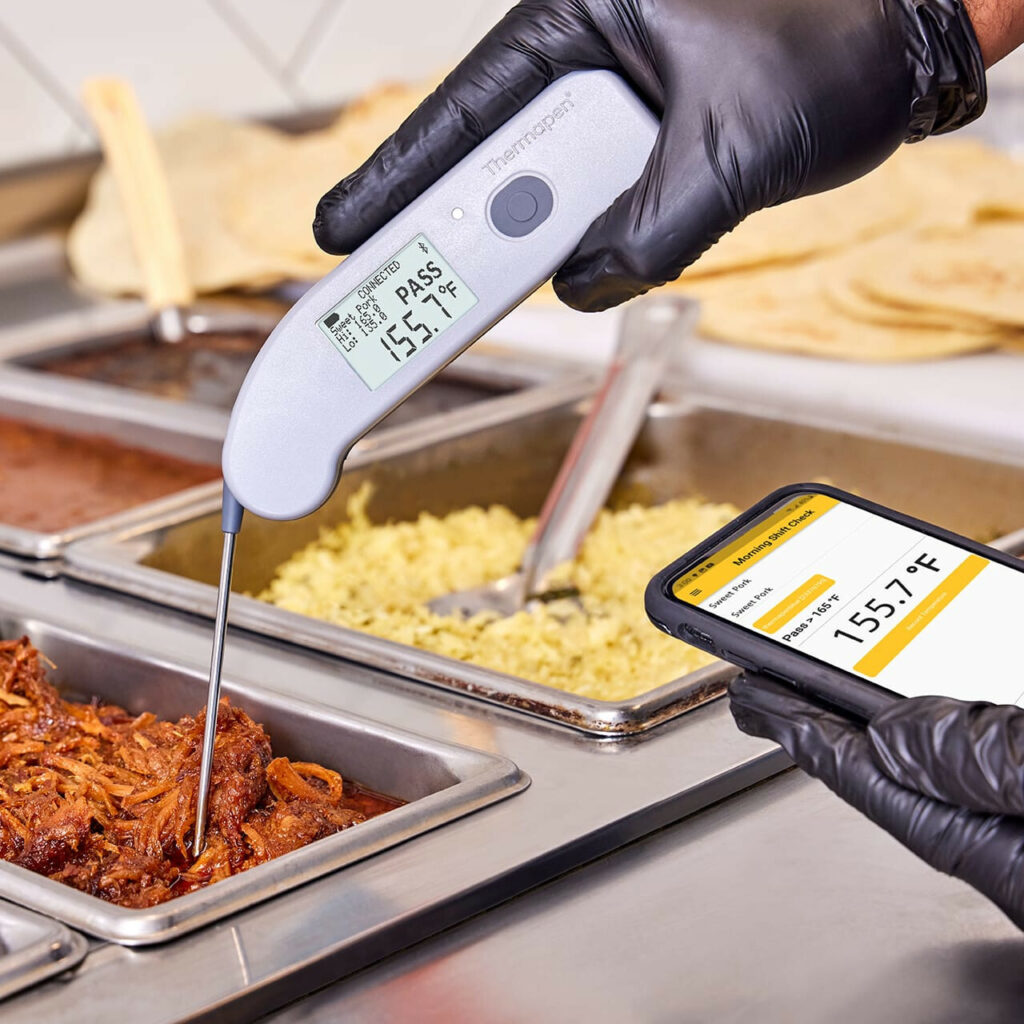What is food safety manager software and why is it essential for HACCP and ISO compliance?
Food safety manager software is a digital platform that automates and streamlines food safety management processes, helping organisations maintain compliance with international standards like HACCP and ISO 22000. These systems replace manual paperwork with intelligent workflows that track, document, and verify every critical control point across the food supply chain.
The software directly supports HACCP compliance by digitising the seven core principles: hazard analysis, critical control point identification, critical limit establishment, monitoring procedures, corrective actions, verification activities, and record-keeping. For ISO 22000 management systems, these platforms provide structured frameworks for implementing food safety policies, conducting risk assessments, managing documentation, and demonstrating continuous improvement during certification audits.
Why organisations cannot afford to operate without it
Manual food safety management creates vulnerabilities that modern operations cannot tolerate:
- Human error elimination: Automated alerts and digital checklists ensure no critical safety check gets overlooked or incorrectly recorded
- Real-time visibility: Instant access to temperature logs, sanitation records, and corrective action reports across multiple sites
- Audit preparedness: Centralised documentation with timestamp verification and digital signatures makes certification audits straightforward
- Regulatory agility: Automated compliance tracking adapts quickly when food safety regulations evolve
The Best Food Safety Manager Software for HACCP and ISO Standards transforms compliance from a reactive burden into a proactive advantage. Organisations gain the ability to identify trends before they become incidents, respond to supplier issues immediately, and demonstrate due diligence with complete traceability.
Food manufacturers, distributors, retailers, and hospitality providers face increasing scrutiny from regulators and consumers alike. Digital food safety management systems provide the evidence-based assurance that products meet safety standards at every stage—from farm to fork. This technological foundation protects both public health and business reputation in an industry where a single contamination incident can destroy decades of trust.

What key features should organisations look for in food safety manager software?
The right food safety software features transform compliance from a paperwork burden into an automated, efficient process. Organisations should prioritise solutions that digitise core food safety activities whilst providing real-time visibility across all operations.
1. Digital checklists and audits
Digital checklists and audits eliminate paper-based systems that are prone to loss, illegibility, and human error. Modern platforms allow teams to complete inspections using structured digital forms that automatically timestamp entries, capture photos, and flag non-conformances instantly.
2. Real-time alerts
Real-time alerts ensure critical safety issues never go unnoticed. The software should send immediate notifications when temperatures exceed safe ranges, tasks remain incomplete past deadlines, or corrective actions require attention. This instant communication prevents minor issues from escalating into serious compliance violations.
3. Mobile accessibility
Mobile accessibility empowers staff to conduct inspections and record data directly from production floors, storage areas, or receiving docks. Teams can access HACCP plans, complete temperature logs, and document observations without returning to desktop computers, significantly reducing documentation delays.
4. Employee training modules
Employee training modules centralise food safety education, tracking completion rates and certification renewals. Built-in training ensures all staff understand proper hygiene practices, allergen controls, and emergency procedures whilst maintaining audit-ready records of competency.
5. Document management
Document management organizes HACCP plans, standard operating procedures, certificates, and audit reports in searchable digital repositories. Version control prevents outdated documents from circulating, whilst automated approval workflows maintain document integrity.
6. Supplier management and traceability
Supplier management and traceability tools monitor vendor compliance, track ingredient origins, and maintain certificates of analysis. This visibility proves essential during recalls or when demonstrating supply chain control to auditors.
7. Compliance tracking with automated reminders
Compliance tracking with automated reminders prevents missed inspections, expired certifications, or overdue equipment calibrations. The system proactively alerts responsible personnel before deadlines, maintaining continuous compliance.
8. Integration capabilities
Integration capabilities connect food safety data with existing ERP or CRM systems, eliminating duplicate data entry and providing holistic operational insights.
9. Data security and role-based access control
Data security and role-based access control protect sensitive information whilst ensuring employees access only relevant data for their responsibilities, maintaining both security and operational efficiency.
More about: What to Look for in Food Safety Compliance Software for 2025
Which are the best food safety manager software solutions for HACCP and ISO standards?
The best food safety software 2024 market offers diverse solutions tailored to different organizational needs and scales. Each platform brings unique strengths to HACCP and ISO compliance management.
Effivity
Effivity delivers comprehensive multi-standard support, making it ideal for organizations managing multiple certifications simultaneously. The platform handles ISO 22000, FSSC 22000, and other food safety standards through integrated modules covering document control, audit management, risk assessment, and corrective action tracking. Cloud-based or on-premise deployment options accommodate various IT infrastructures, whilst multi-language support serves global operations. Effivity review feedback consistently highlights its robust analytics dashboard that transforms compliance data into actionable insights for continuous improvement.
Operandio
Operandio specializes in practical HACCP automation for hospitality and food service businesses. The platform connects wireless temperature sensors directly to digital monitoring systems, eliminating manual logging errors. Real-time alerts notify managers instantly when critical control points deviate from safe parameters. Built-in training modules ensure staff understand proper food handling procedures, whilst mobile accessibility enables inspections anywhere on-site.
SafetyCulture
SafetyCulture (formerly iAuditor) excels through customization and collaboration. Organizations create bespoke inspection templates matching their specific HACCP plans and operational requirements. SafetyCulture benefits include intuitive mobile data collection, photo documentation capabilities, and team communication tools that close the loop on corrective actions. The analytics dashboard identifies recurring issues across multiple locations.
Safefood 360
Safefood 360 provides detailed compliance tracking with specialized HACCP plan builders and supplier documentation control.
FoodLogiQ
FoodLogiQ strengthens supply chain transparency through advanced traceability features and incident management protocols.
Zip HACCP by Hubworks
Zip HACCP by Hubworks offers cost-effective compliance for small to medium-sized businesses, simplifying temperature monitoring and digital checklists without overwhelming complexity or enterprise-level pricing.
How does food safety software support global certifications and enhance market access?
Food safety manager software directly supports compliance with internationally recognised certifications that open doors to global markets. These platforms provide structured frameworks and documentation tools specifically designed for standards including GMP (Good Manufacturing Practices), HACCP (Hazard Analysis Critical Control Point), ISO 22000, BRC (British Retail Consortium), SQF (Safe Quality Food), FSSC 22000, and IFS (International Featured Standards).
The Best Food Safety Manager Software for HACCP and ISO Standards streamlines the certification process through automated compliance tracking, pre-built templates aligned with regulatory requirements, and centralised documentation repositories. Digital audit trails and real-time monitoring capabilities ensure organisations maintain continuous adherence to certification criteria rather than scrambling before audits.
The Importance of GFSI Recognised Standards
GFSI recognised standards carry particular weight in international trade. The Global Food Safety Initiative benchmarks food safety schemes, and software supporting GFSI-approved certifications (such as BRC, SQF, FSSC 22000, and IFS) enables businesses to meet retailer requirements across different regions with a single certification. This recognition eliminates redundant audits and accelerates market entry.
Demonstrating GMP Compliance for Regulated Markets
GMP compliance tools embedded within these platforms help manufacturers demonstrate systematic control over production processes, hygiene practices, and quality management—fundamental requirements for exporting to regulated markets.
Strengthening Reputation Through Certification Support
Certification support through specialised software strengthens organisational reputation by providing verifiable proof of food safety commitment. Customers, retailers, and regulatory bodies gain confidence when suppliers demonstrate compliance through transparent, technology-backed systems. This trust translates into competitive advantages, preferred supplier status, and access to premium market segments that demand rigorous food safety certifications.
What are the operational benefits of implementing food safety manager software?
Food safety manager software transforms daily operations by eliminating manual errors that plague paper-based systems. Automated data entry, digital checklists, and sensor integrations remove human inconsistencies from temperature logs, sanitation records, and critical control point monitoring. Staff spend less time on paperwork and more time addressing actual safety concerns.
1. Audit preparedness tools
Audit preparedness tools embedded within these platforms maintain continuous documentation that auditors require. The software automatically organises HACCP plans, corrective action records, training certificates, and supplier documentation in searchable digital archives. Automated reminders ensure teams complete inspections before deadlines, preventing last-minute scrambles when auditors arrive.
2. Regulatory compliance automation
Regulatory compliance automation keeps organisations aligned with changing food safety laws across multiple jurisdictions. The software updates compliance requirements automatically, triggering new workflows when regulations shift. Real-time alerts notify managers of non-conformances immediately, allowing swift corrective actions before minor issues escalate into violations.
3. Operational efficiency food safety software
Operational efficiency food safety software delivers comes from streamlined workflows that connect every department. Mobile accessibility means floor staff can report issues instantly whilst warehouse teams update receiving logs on tablets. Integration with ERP systems eliminates duplicate data entry, whilst analytics dashboards reveal bottlenecks in safety processes. Teams complete more checks in less time, reducing labour costs whilst improving safety outcomes across production lines, storage facilities, and distribution networks.

How to choose the right food safety manager software for your organisation?
Choosing food safety manager software requires careful evaluation of your organisation’s specific compliance requirements, operational scale, and budget constraints. Start by identifying which certifications you need—HACCP, ISO 22000, BRC, or FSSC 22000—then match software capabilities to those standards. Consider whether you need mobile access for field inspections, wireless sensor integration for temperature monitoring, or multi-site management features.
Request demonstrations from vendors to assess user interface intuitiveness and implementation support. Verify integration capabilities with existing ERP or CRM systems to avoid data silos. Check for scalability as your operations grow and examine customer reviews from similar-sized organisations in your sector.
The Best Food Safety Manager Software for HACCP and ISO Standards transforms compliance from a reactive burden into a proactive asset. Technology-driven solutions safeguard product quality whilst strengthening your market position through verifiable regulatory adherence and audit readiness.
Learn about: What to Look for in Food Safety Compliance Software for 2025
FAQs
Food safety manager software is a digital platform that automates HACCP and ISO 22000 compliance processes, replacing manual paperwork with real-time monitoring, documentation, and verification of critical control points throughout the food supply chain.
It digitises the seven HACCP principles—hazard analysis, critical control point identification, critical limits, monitoring, corrective actions, verification, and record-keeping—ensuring systematic and error-free compliance across all operations.
Yes. It provides structured frameworks for implementing food safety policies, conducting risk assessments, managing documentation, and demonstrating continuous improvement, which streamlines ISO 22000 certification audits.
Essential features include digital checklists and audits, real-time alerts, mobile accessibility, employee training modules, document management, supplier traceability, automated compliance tracking, integration capabilities, and role-based data security.
It monitors vendor compliance, tracks ingredient origins, maintains certificates of analysis, and provides detailed audit trails, which is crucial for managing recalls and demonstrating supply chain control to auditors.
Top solutions include Effivity, Operandio, SafetyCulture (iAuditor), Safefood 360, FoodLogiQ, and Zip HACCP by Hubworks—each offering unique features for multi-standard compliance, HACCP automation, mobile accessibility, and supply chain traceability.
It reduces human error through automation, streamlines inspections and reporting, integrates with ERP systems, provides mobile access for staff, and allows analytics dashboards to identify process bottlenecks—saving time and labor while maintaining safety standards.
Yes. Platforms support GFSI-recognised standards like BRC, SQF, FSSC 22000, IFS, GMP, HACCP, and ISO 22000, simplifying certification, eliminating redundant audits, and enabling businesses to meet international market requirements.
Real-time alerts and sensor integrations track temperatures, sanitation tasks, and critical control points instantly. This ensures deviations are addressed immediately, preventing contamination and maintaining consistent compliance across all sites.
Consider your certifications, operational scale, budget, need for mobile or multi-site access, integration with existing systems, scalability, vendor support, and software usability. Request demos to ensure the platform meets your specific compliance and operational needs.
